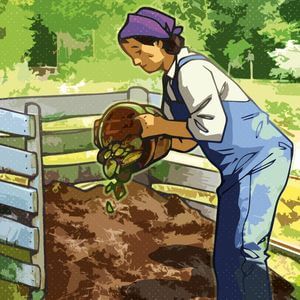Aspergillus fumigatus

Like a feather duster
Aspergillus fumigatus is a filamentous fungus. It is characterized by the presence of typical aspergillus heads (a sort of feather duster), producing spores (a form of resistance) that allow the fungus to spread. Aspergillus species are found in the environment and proliferate in soils.
From compost to lungs
These filamentous fungi find a favorable environment for their multiplication in composts. Infection usually occurs when spores are in the air and reach the airways.
Aspergillus can cause 3 main types of diseases:
- Hypersensitivity pneumonia (allergic bronchopulmonary aspergillosis), an occupational disease more common in farmers, also called “farmer’s lung”
- Aspergilloma, colonization by the fungus of pre-existing cavities (pulmonary cavern linked to an old tuberculosis, nasal sinuses, etc.)
- A severe disease that usually occurs in an immunocompromised host called invasive aspergillosis.

- Black cards
- Akkermancia muciniphila
- Aspergillus fumigatus
- Bifidobacterium
- Candida albicans
- Chlamydia trachomatis
- Clostrioides difficile
- HBV
- HPV
- Human immunodeficiency virus
- Klebsiella pneumoniae
- Lactobacille
- Leishmania
- Leptospira interrogans
- Neisseria meningitidis
- Mumps virus
- Streptococcus pneumoniae
- Rickettsia prowazekii
- Measles virus
- Rubella
- Toxoplasma gondii
- Treponema palidum
- Chickenpox virus
- Vibrio cholera
- Zikavirus
